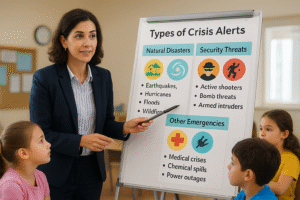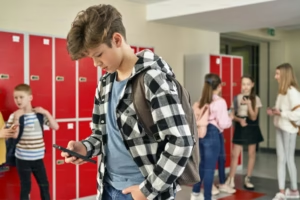Resources
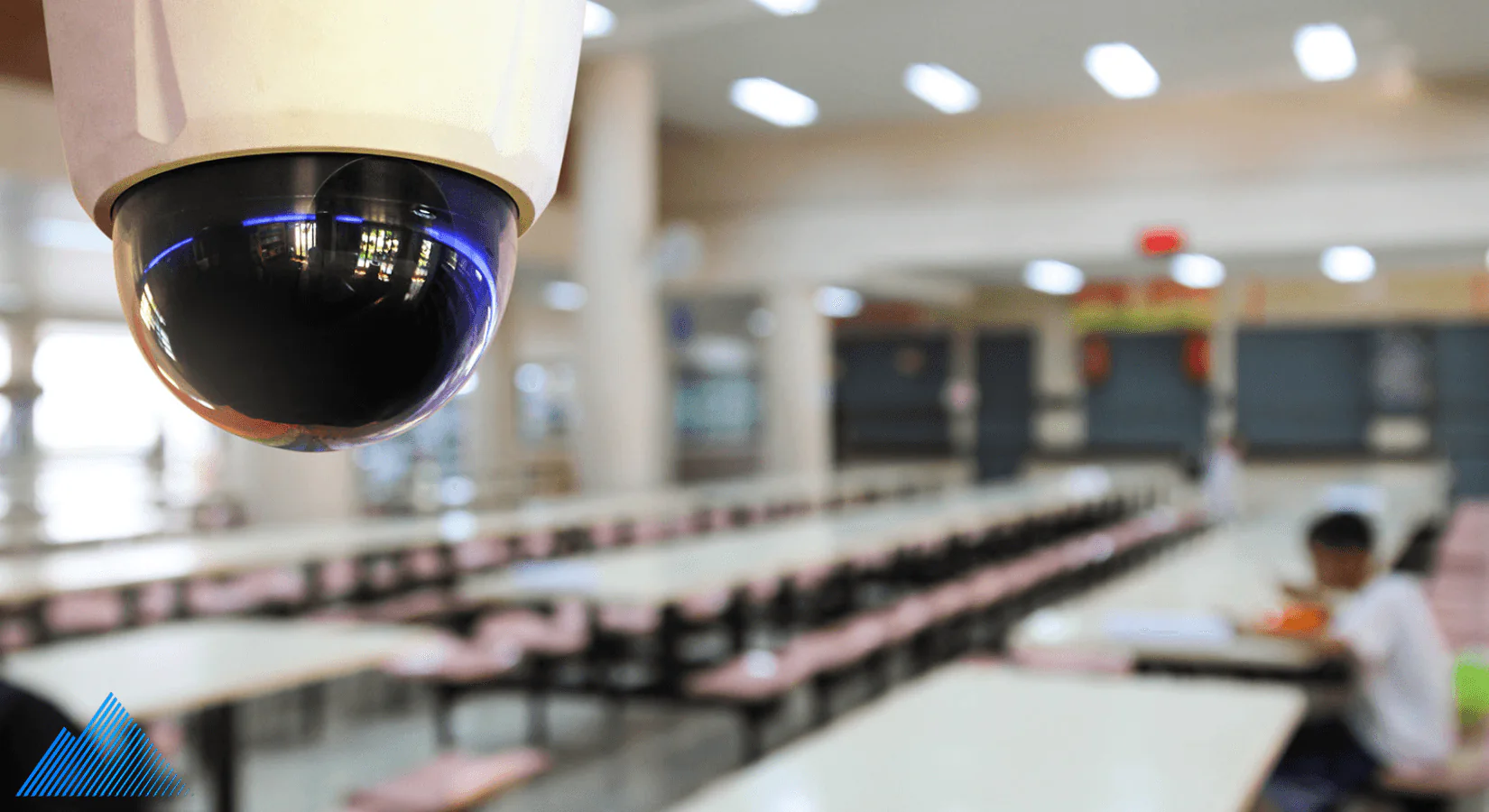
Ensuring Safety: Top Strategies for Enhancing Security in Schools
In today’s rapidly changing world, the safety of our schools has become a paramount concern for parents, educators, and communities alike. With the rise in incidents that threaten the well-being of students and staff, it’s essential to adopt effective strategies to enhance security measures in educational environments.
According to the U.S. Department of Education’s Readiness and Emergency Management for Schools (REMS), comprehensive planning and collaboration are key to building resilient school communities. This article delves into the top approaches for ensuring safety in schools, exploring innovative practices that not only protect but also foster a nurturing atmosphere conducive to learning.
From bolstering physical security to promoting a culture of awareness and resilience, these strategies empower school communities to take proactive steps towards a safer future. For broader policy guidance, the Department of Homeland Security’s School Safety resources offer valuable insights into threat assessment, emergency preparedness, and violence prevention. Join us as we uncover the key elements that contribute to enhanced security in schools, helping create a sanctuary where students can thrive without fear.
The Importance of School Safety
Ensuring the safety of students, teachers, and staff within school premises is a critical concern that extends beyond the walls of the educational institution. It encompasses the well-being and peace of mind of parents, the effectiveness of the educational process, and the overall harmony of the community. The importance of school safety cannot be overstated, as it directly impacts the ability of students to learn and thrive in a secure environment. According to the U.S. Department of Education’s School Climate and Safety resources, robust safety measures provide a foundation for academic excellence and personal growth.
A secure school environment fosters a sense of stability and confidence among students, which is essential for their academic and social development. When students feel safe, they are more likely to engage actively in their studies, participate in extracurricular activities, and build positive relationships with their peers and teachers. Conversely, a lack of adequate safety measures can lead to heightened anxiety, distraction, and absenteeism, all of which can severely hamper the educational experience and outcomes.
Moreover, the importance of school safety extends to the broader community. Schools often serve as central hubs within communities, hosting events and providing resources that benefit local families. Ensuring that these institutions are safe and secure helps to maintain community trust and support. The Department of Homeland Security’s School Safety initiative reinforces the idea that the well-being of children and educators is a shared responsibility. By prioritizing school safety, we not only protect our future generations but also uphold the values of care and vigilance that define a cohesive society.
Understanding Common Security Risks in Schools
To effectively enhance school security, it is essential to first understand the common risks and threats that schools face. These risks can vary widely depending on the location, size, and demographic of the school, but some prevalent security concerns include unauthorized access, bullying, violence, and natural disasters. Recognizing these risks allows school administrators to tailor their security strategies to address specific vulnerabilities and ensure comprehensive protection. The SchoolSafety.gov Threat Assessment and Reporting offers a framework for identifying and managing these risks effectively.
Unauthorized access is a significant concern for many schools, as it can lead to theft, vandalism, or more severe threats to student and staff safety. Schools often deal with a high volume of visitors, including parents, contractors, and service providers, making it challenging to monitor and control who enters the premises. Implementing stringent access control measures can help mitigate this risk by ensuring that only authorized individuals are allowed on school grounds.
Bullying and violence, both physical and verbal, are pervasive issues in many educational settings. These behaviors not only endanger the immediate safety of students but also have long-term psychological impacts. Addressing these risks requires a multifaceted approach that includes preventive measures, such as promoting a respectful school culture, and responsive strategies, such as having clear protocols for reporting and addressing incidents. Schools must also be prepared for natural disasters, such as fires, earthquakes, and severe weather events. These risks necessitate robust emergency preparedness plans that ensure the safety and swift evacuation of all individuals on school property. The Ready.gov School Emergency Planning Guide outlines key steps for developing and practicing effective response plans.
Comprehensive School Safety Assessments
Conducting comprehensive safety assessments is a critical first step in identifying and addressing potential security gaps within a school. These assessments involve a thorough review of the physical infrastructure, policies, and procedures that are in place to protect students and staff. By systematically evaluating these elements, schools can pinpoint areas of vulnerability and develop targeted strategies to enhance security.
A comprehensive safety assessment typically begins with a physical inspection of the school’s facilities. This includes examining entry and exit points, surveillance systems, lighting, and the overall layout of the campus. Assessors look for weaknesses, such as unmonitored entrances or poorly lit areas, that could be exploited by unauthorized individuals. They also evaluate the effectiveness of existing security measures, such as locks, alarms, and fencing. The goal is to identify any physical changes that can be made to improve safety, such as installing additional cameras or reinforcing access points. The National Institute of Justice’s guide on school security technologies outlines best practices for evaluating and upgrading physical security infrastructure.
In addition to the physical inspection, a comprehensive safety assessment involves reviewing the school’s policies and procedures related to security. This includes examining protocols for handling emergencies, managing visitors, and responding to incidents of bullying or violence. Assessors evaluate whether these policies are up-to-date, clearly communicated, and consistently enforced. They also consider the training and preparedness of staff and students, assessing whether they are equipped to respond effectively in various scenarios. The insights gained from these assessments provide a solid foundation for developing and implementing enhanced security measures tailored to the school’s unique needs.
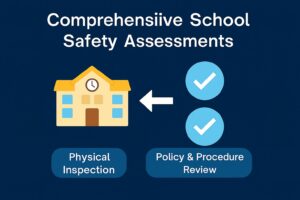
Figure 1: Effective school safety begins with a thorough assessment. This visual highlights the dual focus of physical infrastructure inspection and policy evaluation—essential steps in identifying vulnerabilities and strengthening security
Implementing Access Control Measures
One of the most effective strategies for enhancing school security is implementing robust access control measures. These measures are designed to regulate and monitor who enters and exits the school premises, thereby preventing unauthorized access and ensuring the safety of students and staff. Access control measures can range from physical barriers to advanced technological solutions, each playing a crucial role in creating a secure environment.
Physical access control measures include the use of gates, fences, and locked doors to restrict entry to the school grounds. These barriers help to create a clear perimeter around the school, making it more difficult for unauthorized individuals to gain access. Additionally, schools can implement visitor management systems that require all visitors to check in at a designated entry point, where they must provide identification and receive a visitor badge. This ensures that only authorized individuals are allowed on school property and that their presence is documented. The U.S. Department of Justice’s School Access Control Strategies highlight how schools are using layered access control to prevent violence and improve safety.
Technological solutions can further enhance access control by providing more sophisticated means of monitoring and regulating entry. For example, schools can install electronic access control systems that use key cards or biometric scanners to allow entry only to authorized personnel. These systems can be integrated with surveillance cameras and alarm systems to provide real-time monitoring and alerts in case of unauthorized access attempts. Additionally, schools can employ software solutions that track and manage access permissions, making it easier to update and maintain security protocols. By combining physical and technological access control measures, schools can create a multi-layered security system that effectively safeguards their premises.
The Role of Technology in School Security
Technology plays an increasingly vital role in enhancing school security, offering innovative solutions that address a wide range of safety concerns. From surveillance systems to communication tools, technology provides schools with the ability to monitor, respond to, and prevent security threats more effectively. By leveraging the latest advancements, schools can create a more secure and responsive environment for students and staff.
One of the most significant technological contributions to school security is the use of surveillance systems. High-definition security cameras can be strategically placed throughout the school campus to monitor key areas such as entrances, hallways, and common spaces. These cameras provide real-time footage that can be monitored by security personnel, allowing for swift identification and response to any suspicious activity. Additionally, video recordings can be reviewed later to investigate incidents and gather evidence. Advanced surveillance systems may also include features such as facial recognition and motion detection, further enhancing their effectiveness. The COPS Office School Safety Technology Guide offers detailed recommendations for selecting and deploying surveillance tools in educational settings.
Communication technology is another critical component of school security. Modern communication tools, such as mass notification systems, enable schools to quickly disseminate important information to students, staff, and parents in case of an emergency. These systems can send alerts via text messages, emails, and phone calls, ensuring that everyone is informed and can take appropriate action. Furthermore, schools can implement two-way communication systems that allow staff and students to report incidents or request assistance in real-time. This immediate communication capability is essential for coordinating responses and ensuring the safety of all individuals on campus. The Ready.gov Emergency Alerts page outlines how schools can use public alert systems to enhance emergency communication.
Training Staff and Students for Emergency Situations
Proper training for both staff and students is a fundamental aspect of enhancing school security. When individuals are well-prepared and know how to respond in emergency situations, the likelihood of successful outcomes increases significantly. Training programs should cover a range of scenarios, including natural disasters, active shooter situations, and medical emergencies, ensuring that everyone on campus is equipped with the knowledge and skills needed to act swiftly and effectively.
For staff members, training should include detailed instructions on their roles and responsibilities during various types of emergencies. This may involve conducting regular drills and simulations to practice evacuation procedures, lockdown protocols, and communication strategies. Staff should also receive training on how to identify and respond to potential threats, such as recognizing signs of bullying or suspicious behavior. By being well-prepared, staff can provide clear guidance and support to students, helping to maintain order and safety in crisis situations. The U.S. Department of Education’s REMS TA Center offers training modules and resources for emergency preparedness in schools.
Students also need to be trained on how to respond during emergencies. Age-appropriate training programs can teach students the basics of emergency preparedness, such as understanding evacuation routes, knowing where to seek shelter, and following instructions from teachers and emergency personnel. Regular drills and practice sessions can help students become familiar with these procedures, reducing anxiety and confusion during actual emergencies. Additionally, schools can incorporate lessons on personal safety and resilience, empowering students to take proactive steps to protect themselves and others. The FEMA Youth Preparedness Resources provide engaging materials to help students learn about emergency readiness in a fun and accessible way.
Collaborating with Local Law Enforcement
Collaboration with local law enforcement agencies is a crucial component of a comprehensive school security strategy. Police officers and other law enforcement personnel bring valuable expertise and resources that can enhance the safety of school environments. By establishing strong partnerships with these agencies, schools can benefit from their support in both preventive measures and emergency response. The U.S. Department of Justice’s guide to school–law enforcement partnerships offers practical frameworks for building these relationships.
One of the primary ways schools can collaborate with law enforcement is by involving them in the development and implementation of security plans. Law enforcement professionals can provide insights into effective security practices, conduct risk assessments, and recommend improvements to existing measures. They can also assist in training school staff and students on safety protocols, ensuring that everyone is prepared to respond appropriately in various scenarios. Regular communication and coordination between schools and law enforcement help to create a cohesive and well-informed security strategy. For deeper insight into overcoming collaboration challenges, this article on safe school partnerships is a valuable resource.
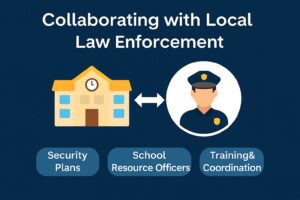
Figure 2: Strong partnerships with law enforcement enhance school safety through joint planning, on-campus support, and coordinated training. This visual highlights the key pillars of effective collaboration
In addition to planning and training, law enforcement agencies can offer direct support through the presence of school resource officers (SROs). SROs are specially trained officers who work within schools to provide security, build relationships with students, and address safety concerns. Their presence on campus serves as a deterrent to potential threats and allows for immediate response to incidents. SROs can also play a vital role in fostering a positive school climate by engaging with students, providing mentorship, and promoting a sense of safety and trust.
Creating a Positive School Climate
Creating a positive school climate is an essential aspect of enhancing security in schools. A positive climate fosters a sense of belonging, respect, and safety among students and staff, which can significantly reduce the likelihood of conflicts and incidents. By promoting a supportive and inclusive environment, schools can address the root causes of many security concerns and create a culture where everyone feels valued and protected. The National School Climate Center offers tools and frameworks to help schools assess and improve their climate.
One of the key elements of a positive school climate is the promotion of respectful and inclusive behavior. Schools can implement programs that teach students about the importance of empathy, kindness, and cooperation. These programs can include activities such as peer mentoring, conflict resolution workshops, and diversity awareness campaigns. California’s school safety collaboration guide provides actionable ideas for student-led initiatives and inclusive decision-making.
Another important factor in creating a positive school climate is the involvement of students in decision-making processes. When students feel that their voices are heard and their opinions matter, they are more likely to take ownership of their behavior and contribute to a safe and supportive environment. Schools can establish student councils, feedback forums, and other platforms that allow students to express their thoughts and participate in shaping school policies and practices. This sense of empowerment can enhance students’ commitment to maintaining a positive and secure school climate.
Engaging Parents and the Community in Safety Initiatives
Engaging parents and the broader community in school safety initiatives is vital for creating a comprehensive and effective security strategy. Parents and community members can provide valuable support, resources, and perspectives that enhance the safety and well-being of students. By fostering strong partnerships and open communication, schools can build a collaborative approach to security that benefits everyone. The Safe Schools/Healthy Students (SS/HS) Framework emphasizes the importance of family and community involvement in school safety planning.
One way to engage parents in school safety initiatives is by involving them in the development and implementation of security plans. Schools can organize meetings, workshops, and forums where parents can learn about safety measures, provide input, and ask questions. This collaborative approach ensures that parents are well-informed and can contribute their insights and concerns. Additionally, schools can create parent volunteer programs that involve parents in activities such as monitoring entrances, assisting with drills, and supporting safety education efforts. For practical guidance, the REMS resource on community engagement specialists offers strategies for involving families and civic partners before, during, and after emergencies. Community engagement is also crucial for enhancing school security. Schools can partner with local businesses, organizations, and government agencies to access additional resources and support. For example, local businesses can sponsor security equipment, community organizations can provide training and education programs, and government agencies can offer grants and funding for safety initiatives. By leveraging community resources, schools can enhance their security measures and create a network of support that extends beyond the school grounds.
Conclusion: Building a Safer Future for Schools
In conclusion, ensuring the safety of schools requires a multifaceted and collaborative approach that addresses a wide range of risks and challenges. By conducting comprehensive safety assessments, implementing robust access control measures, leveraging technology, and providing thorough training for staff and students, schools can create a secure environment where learning can thrive. Collaboration with local law enforcement, fostering a positive school climate, and engaging parents and the community further strengthen the overall security strategy. The SchoolSafety.gov home page offers centralized access to tools, guidance, and best practices for integrating these efforts.
The safety of our schools is a shared responsibility that involves the collective efforts of educators, parents, students, law enforcement, and the broader community. By working together and prioritizing safety, we can build a future where schools are sanctuaries of learning and growth, free from fear and harm. As we continue to evolve and adapt to new security challenges, it is essential to remain vigilant, proactive, and committed to the well-being of our students and staff. Through these combined efforts, we can ensure that our schools remain safe, nurturing environments where every student has the opportunity to succeed.
Join school leaders, superintendents, and school safety directors for an engaging session on how to embed readiness into your school culture. Register for a free webinar focusing on “Building a Culture of Readiness in School” on 4th November at 2pm Eastern (1pm Central, 11am Pacific) to learn practical strategies to reduce response times, build staff confidence, strengthen community trust and move beyond compliance.
SimulAlert’s Every Second in Mind® approach equips schools to act with confidence—for effective emergency alert and response. Are you exploring safety systems for your school/district? Click here to schedule a SimulAlert® demo.

